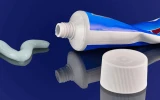4 Amazing Tips for Cleaning with White Vinegar
Published on Aug 15, 2017 | Updated - Oct 17, 2022
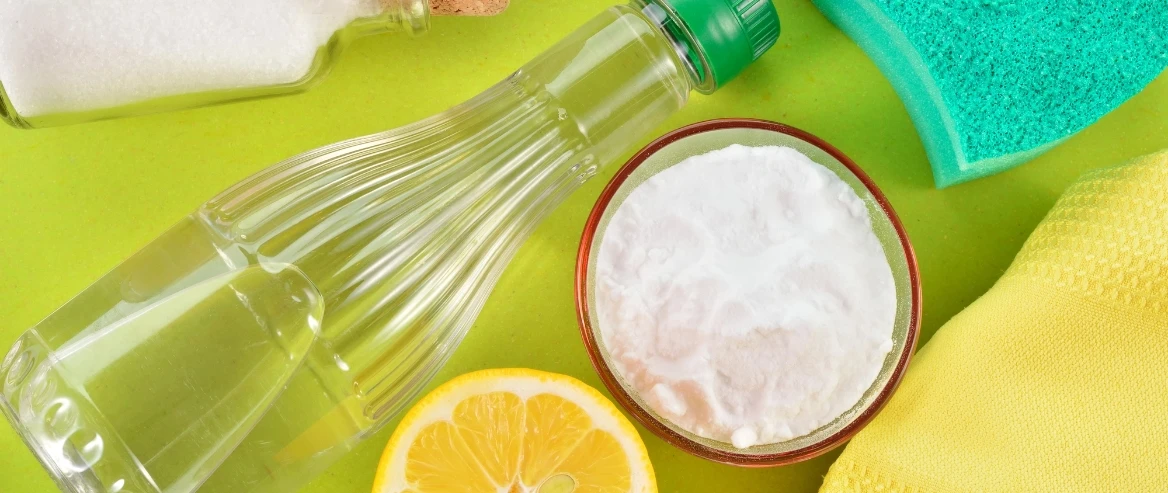
The white vinegar in your pantry has numerous applications aside from just putting it on your fish and chips.
Vinegar is actually an excellent cleaning agent - it's surprising what you can do with just some water and this all-natural ingredient.
These are our favourites.
What makes white vinegar an effective cleaner?
Vinegar is produced from acetic acid, which makes it a natural disinfectant that can take care of numerous germs including salmonella and E Coli. It is also non-toxic, bio-degradable, and achieves amazing results on everything from mould to grout lines.
However, before you get too excited, it’s important to know that undiluted white vinegar may cause damage to natural stone or wood, so always check before applying vinegar on any hard surface like kitchen floors or countertops.
In most cases, you just need to dilute white vinegar down to a 1:1 ratio before using it on most surfaces. You can even add other essential oils for an added scent if desired.
With all this in mind, these are 4 of the best ways you can use white vinegar in your spring cleaning that you probably didn't know about including:
-
mould cleaning
-
grout cleaning
-
unclogging and deodorising drains
-
cleaning kitchen tops, stoves and stainless steel
It can also be a handy companion for getting stains out of dirty carpets. So, let’s get started!
4 Ways You Can Use White Vinegar for Cleaning
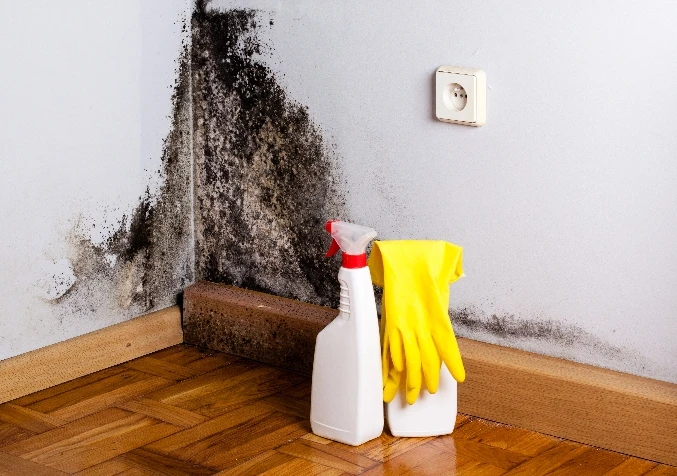
1. Mould cleaning
Mould is nothing to sneeze at. The slimy black spots on your shower curtain, the furry white patches in the laundry, or the slippery orange film around the kitchen drain all point towards a problem you might not have known existed - mould.
Mould is not just an eyesore, it can cause allergic reactions such as a runny nose, sneezing, and eye irritation. It may also trigger asthma attacks in some people who have sensitive immune systems. The good news is that vinegar can help you to get rid of household mould.
According to some sources, vinegar kills up to 82% of all mould species and is also an amazing cleaner in its own right. For a mild to moderate mould issue, try the following.
How to clean mould white vinegar
-
Use a spray bottle to apply concentrated vinegar onto the mould. In areas with heavy mould, use a soft nylon brush to agitate the mould.
-
Leave the vinegar on the mould for an hour to do its work.
-
Wipe away with a clean, damp cloth. If there’s still a mould stain then you may need to call professionals like Electrodry, who can treat both hidden and visible mould, while providing advice on the source of the mould contamination.
Mould can be toxic, so we recommend using a full-face mask and appropriate protective equipment. Seek professional help for severe mould colonisation.
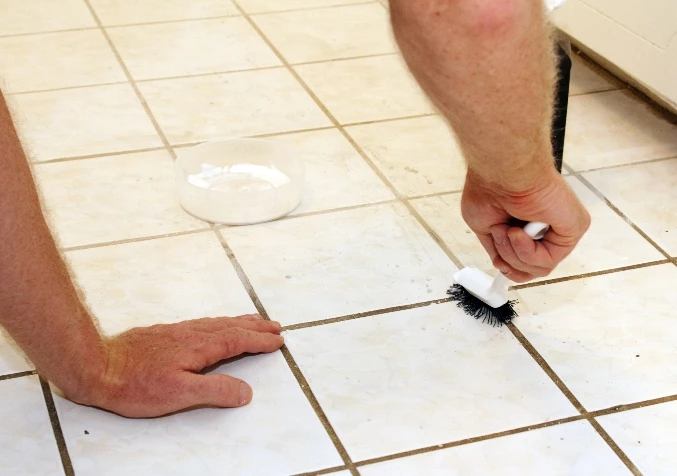
2. Tile and grout cleaning
Have you mopped your tiles and been disappointed with the results because the grout still looks dark and grimy?
Grout plays more of a role in your home than you may think, so it’s important to protect it. Grout holds your tiles together but over time, water and grime are absorbed into them, potentially creating a bacteria issue, or worse, affecting their structure.
If you want to make your grout look like new again, try this incredibly effective process.
How to use white vinegar for tile and grout cleaning
-
Mix a paste of baking soda and water (3:1) and apply to the grout lines with your finger (using gloves).
-
Leave for at least 30 minutes.
-
Scrub with an old toothbrush and wipe completely clean.
-
If still dirty, wipe a small amount of white vinegar along them. Note: you should use this method sparingly as regularly using vinegar on your grout lines may wear down the grout. Lightly rinse or mop the affected area.
This method can be a slow process, so allow plenty of time. Vinegar may damage natural stone tiles, so only use this process for ceramic and porcelain tiles.
3. Unclogging and deodorising drains
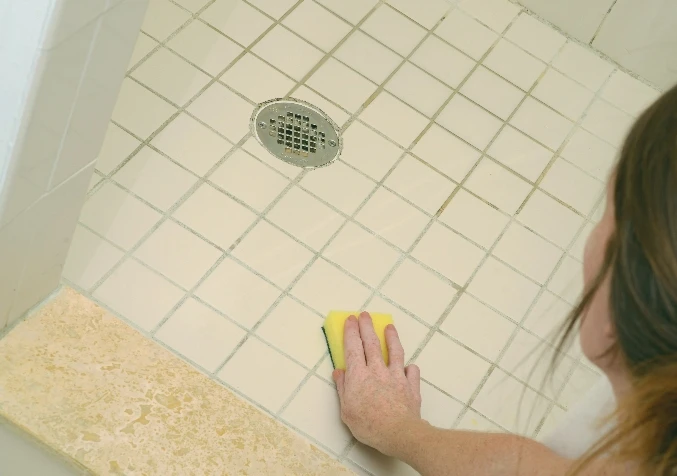
The pipes under your kitchen and bathroom sink are constantly being bombarded with all sorts of substances from food scraps and cooking grease to toothpaste and cosmetics. Over time, these substances can build up and solidify causing blockages.
The older your home, the more likely it is that you'll experience clogs and backups as the plumbing tends to be made from narrow iron pipes compared to the modern PVC plumbing systems of newer homes.
These blockages can lead to slow draining, causing unpleasant smells and odours.
Before you reach for the Draino, here’s an environmentally friendly alternative that’s much gentler on your pipes.
How to unclog a drain with white vinegar
-
Using a funnel, pour 1/2 cup of baking soda down the drain and around the rim followed by 1 cup of boiling water.
-
Let the baking soda on the rim sit for half an hour before rinsing with hot water.
-
Once properly rinsed, pour a cup of white vinegar down the drain, for added effect.
-
One last rinse of cold water will do the trick!
Apart from clearing the drain, this process also treats odour-causing bacteria.
4. Cleaning kitchen tops, stoves and stainless steel
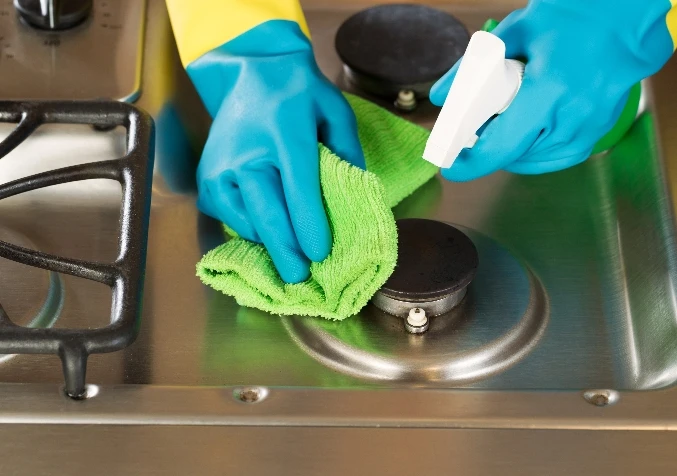
Grease is the leading cause of damage to stainless steel kitchen appliances. If this grease sits for too long, there will soon be unsightly smudges all over your kitchen appliances.
Stainless steel is easily scratched, so extra care needs to be taken while cleaning appliances.
You can make your stainless steel cleaner with some simple household ingredients such as vinegar. Not only is this healthier for the environment and yourself but also a lot cheaper. However, you also need to avoid using harsh scrubbing brushes and sponges.
Try this method on your stainless steel kitchen appliances and you’ll have them sparkling clean in no time!
How to clean a stove with white vinegar
-
Mix equal parts of white vinegar and water in a spray bottle and use it to clean greasy surfaces like kitchen stoves and benches.
-
Just spray on and wipe with a damp cloth. The same process can also be used to clean chrome and stainless steel. In addition to cutting through grease, vinegar will also neutralise any odours on the surface.
-
For super grease-fighting action in the kitchen, try adding 2 tablespoons of white vinegar to your favourite brand of dishwashing detergent and giving the bottle a good shake.
The added vinegar will give your detergent better grease-fighting power, and also reduce the amount you use.
Final Thoughts
Whether you need to remove mould from your bathroom, clean your tiles and grout, unclog blocked drains, or polish up your stainless steel, vinegar is a great option.
Not only is vinegar effective as a cleaning agent, but it is also environmentally friendly. This means you can rest assured that not only are you able to get your house sparkling clean, but you also won’t be contributing to any environmental damage in the process.
Choose Electrodry for Professional Cleaning Services in Your Home
If you are having trouble removing mould, or need your tiles and grout, upholstery or carpet cleaned and sanitised, then speak to us at Electrodry.
Electrodry is Australia's most trusted and reliable carpet and home cleaning service. We are a family-owned business and have been around since 1983.
Our exclusive cleaning systems, innovative cleaning products, and expert technicians ensure that we always provide the highest possible level of service to our clients.
Call Electrodry today on 13 27 13 or make a booking online.



